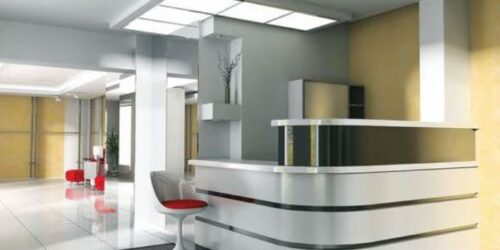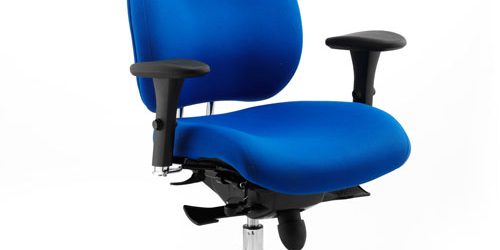Purchasing guide: How to choose your display cases?
Good communication ensures safety and cohesion within a company. Displaying information for employees is not only a matter of good practice but is also required by law. Display cases safeguard displayed documents and are available in a variety of models to suit the needs of different locations. But what are the criteria that should be considered when choosing the right display case? Are there any eco-responsible alternatives? And what are the obligations of companies when it comes to displays? This detailed guide helps you assess your needs.
What is a display case?
This type of office furniture is designed to protect documents while making them easy to read. A display case is made of one or several clear glass doors surrounded by a metal frame, providing access to the displayed documents. The presence of a lock ensures that only authorised individuals can place documents inside and prevents them from being ripped off. If the documents do not require protection, a display rail can also be suitable. Indoor display cases can be found in key areas of a company, such as the reception area or the break room. As for free-standing outdoor display cases, they are typically placed near entrances. To optimise internal communication within the company, the display case must be easily visible. Therefore, it is recommended to place it in a high-traffic area, where as many employees as possible pass through.
Questions to ask before purchasing a display case
Here are the main criteria to consider when choosing a display case for your company.
Will the display case be installed indoors or outdoors?
Weather resistance is the main criterion that distinguishes indoor and outdoor display cases. An outdoor display case is more likely to be exposed to humidity, wind, and rain. For that reason, its materials need to be more robust to ensure the product’s durability and protect the documents inside.
Will the display case be mounted on a wall?
Display cases can be either wall-mounted or free-standing. Choosing a wall-mounted display case requires having a wall or partition that can be drilled into or opting for another display system if not possible. The wall must, naturally, remain unobstructed and not hidden by furniture or any other obstacle. Free-standing display cases can be placed anywhere and easily moved in case of a reorganisation of the premises. The base is available in fixed or mobile versions.
What display capacity is required?
How many documents need to be displayed simultaneously to effectively carry out the company’s communication policy? This criterion determines the size of the display case, expressed in the number of A4 sheets (210 × 297 mm) that can fit in it. A display case can accommodate between 1 and 20 A4 sheets. It is also necessary to consider the space available for installing the display case. Depending on the situation, it may be beneficial to buy several smaller models.
Which type of backing is most suitable?
Display cases are usually perceived as having a cork backing but there are actually two main types of backing. If the backing is a white lacquered or enamelled surface, then it doubles up as a magnetic notice board, on which it is possible to write and attach paper documents using magnets. Meanwhile, the cork panel offers a more natural look, although it is more sensitive to moisture. This is why cork is reserved for indoor display cases.
Which type of frontage to choose between Plexiglas and glass?
Clear vision is possible with these two materials, so the choice depends on both the budget and the constraints of the company. Plexiglas models are more affordable and harmless in the event of impact or breakage (no risk of broken glass). Furniture containing glass may also be prohibited in some companies for safety reasons. In this case, Plexiglas is the best solution. The frontages of glass display models are, in fact, almost exclusively made of tempered glass, a strong material that is less prone to breakage than traditional glass. Tempered glass frontages have the advantage of not tarnishing over times and giving a more premium look to the display case.
Which accessories and options to choose?
When ordering, consider the finishes and display case accessories that will be necessary for its use. Display cases also offer different opening options: Rising, hinged or sliding. The rising and hinged doors need sufficient clearance space but allow full access to the back of the display case. The sliding opening, available on two-door display cases, saves space but only provides access to half of the back.
Among the options, there are also:
- The type of base;
- The colour of the frame;
- The possibility to choose identical or different locks.
Finally, if the backing is a whiteboard, enamelled or lacquered, remember to purchase magnets to attach documents and markers to write if needed. On a cork backing, you will need to buy drawing pins.
Why provide display cases in a company?
Legislation requires companies to display certain information in order to prevent risks for employees. Having display cases thus helps promote the implementation of a health and safety policy at work.
What are the employer’s obligations regarding displaying information?
European directives concerning health and safety at work have been transposed into the laws of European countries. This is the case for Directive 92/58/EEC of the Council of the European Communities of 24 June 1992, which defined minimum requirements for signage and display in companies, including:
- Prohibition signs to limit access to certain types of vehicles, for example;
- Warning signs that indicate risks to people;
- Signs that indicate that certain personal protective equipment is mandatory;
- Rescue or emergency signs, which indicate, among other things, evacuation routes;
- Signs concerning fire-fighting equipment.
This directive requires employers to implement safety signage if risks persist after the application of prevention measures. Signage is accompanied by employee training, who must receive specific instructions for each type of sign.
Display cases as a tool for health and safety at work
By complying with the obligations regarding display in a company, employers ensure the security and well-being of their teams. Concern for health and safety at work involves compliance with legislation, but also the implementation of dedicated quality processes. As stated in the European directive mentioned above, display helps to strengthen the company’s workplace safety policy. This can involve reminding employees of risks to encourage vigilance. Display cases can also contain documents providing valuable information in case of a fire, such as the names of those in charge of evacuation, the emergency contact number, the direction to emergency exits, the location of the assembly point, etc. Display cases also serve to spread information on psycho-social risks and violence, especially extracts from articles of law to fight against discrimination and moral or sexual harassment. Content specific to the running of the company is also given to provide the same level of information to all employees. This can include internal regulations, agreements concluded with partners, working hours, or the period for taking paid leave.
Finally, display cases can be used to remind employees of the company’s values and objectives to unite teams. To equip your company with the appropriate display cases, discover our range of products: “Display Cases”.
[1] Programme for the Endorsement of Forest Certification





